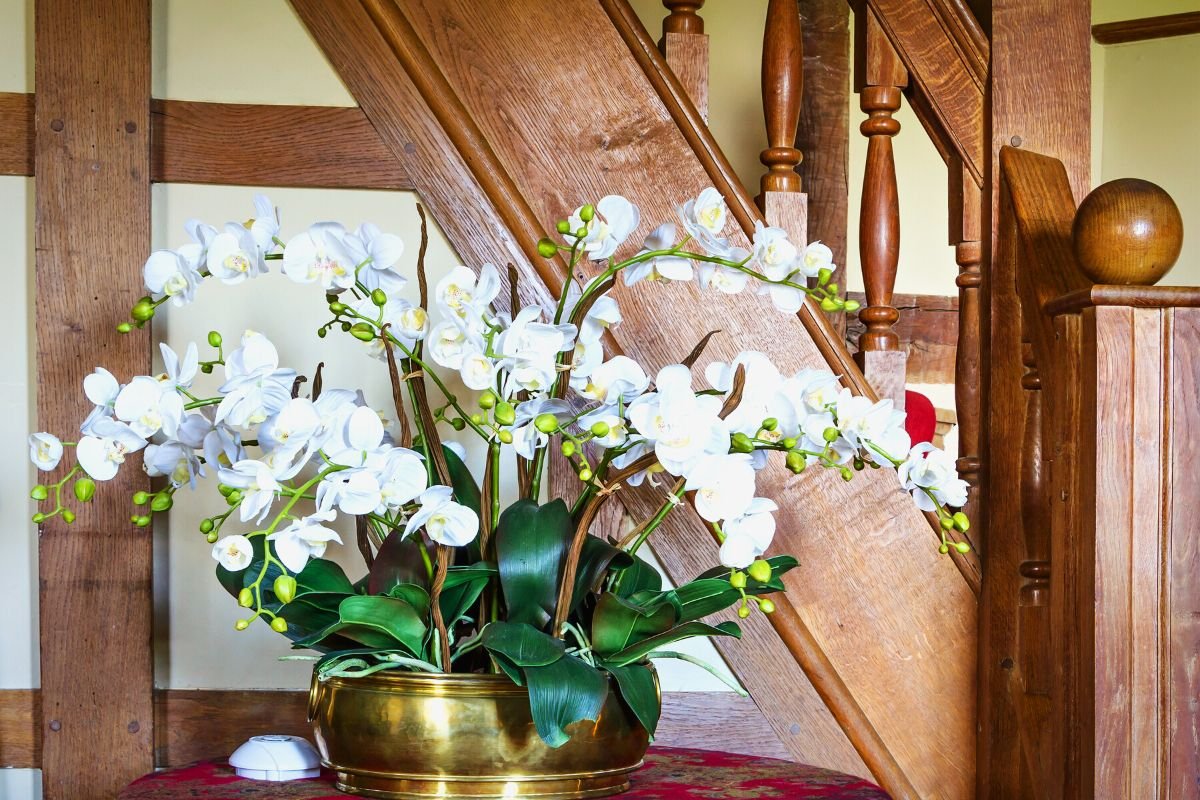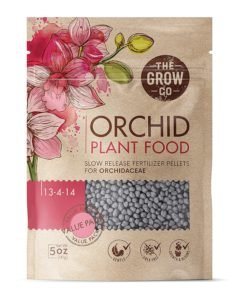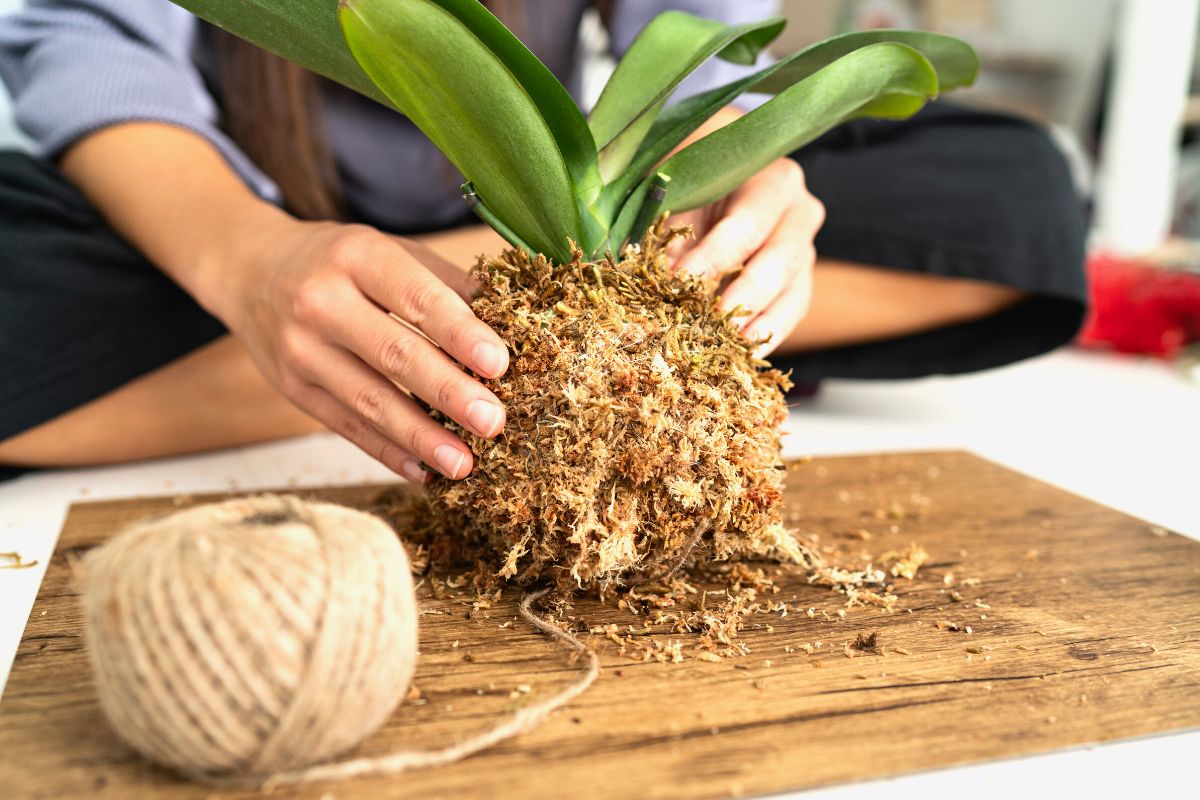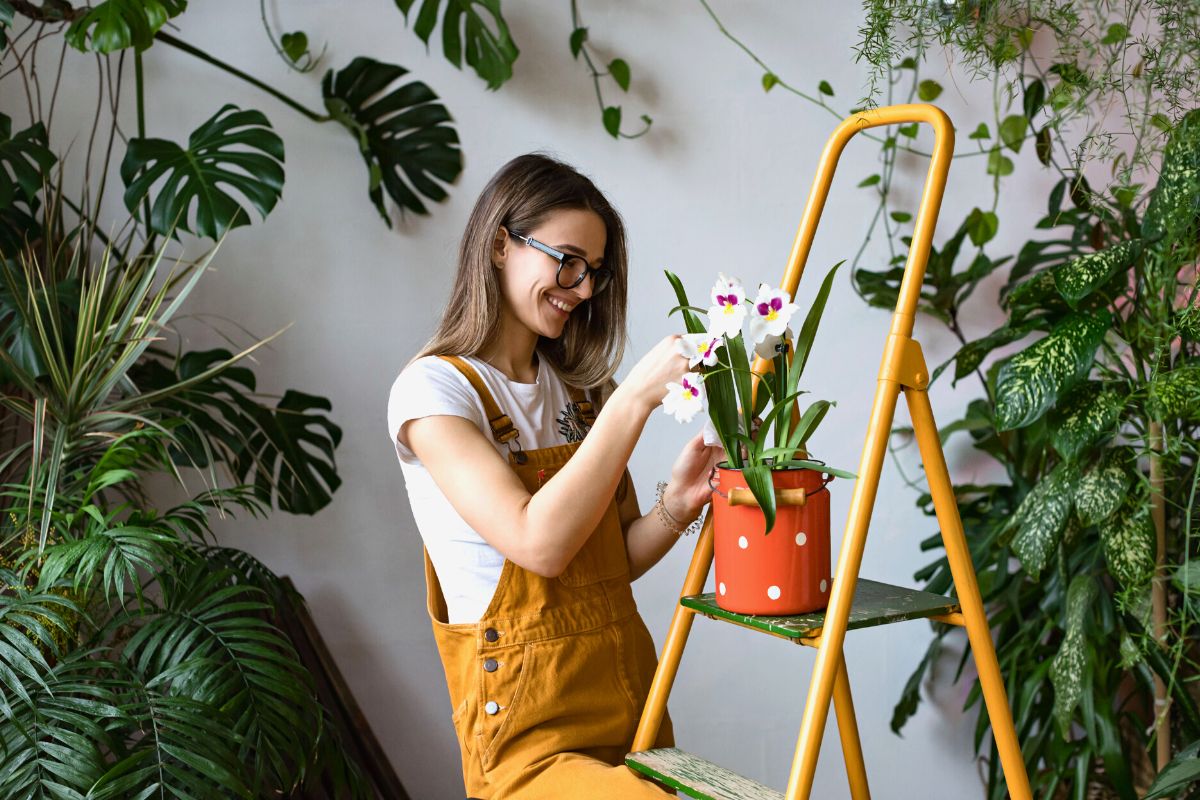Orchids are beautiful and delicate flowers that can bring a touch of color and life to any space. But how long do orchids last?
After all the hard work that it takes to care for an orchid plant, we can’t help but expect a few orchid flowers to stick around for a while at the end of it.
In this article, we’ll discuss not only how long orchid blooms last but also how you can make them last even longer. With the right care, you can enjoy the beauty of your colorful blooms for up to four months! (Depending on the orchid species.)
How long do orchids live?
On average, flowering periods last anywhere from two to sixteen weeks. However, this depends on the orchid species and the care that is provided. The amount of sunlight, water, and nutrients the orchid receives will affect how long the blooms last. Proper care can help orchid blooms last the longest.
The entire orchid plant could live for up to 20 years (maybe even longer!). Think: misty jungles padded with green moss and feathery ferns, where there is a constant supply of moisture and bright sunlight filtered by the tops of the trees. Orchids thrive in warm, humid places.
In the modern world, where they’re subjected to our indoor spaces? Most orchids live for up to 15 years with proper care. (This is where a grow tent could make a big difference, where you can control humidity levels.)
Different species of orchid can live for different amounts of time, ranging from 10 to 20 years. How long orchids last really depends on how they’re treated during that time.

Are orchids annuals or perennials?
Orchids are perennial plants; they bloom every year without dying off like annuals. Many different species of orchids can bloom multiple times a year. It all depends on the species, the environment, and how well it is cared for.
How long can a potted orchid live?
A potted orchid can live for several years if it is given proper care. The most important factor for a long-lasting orchid is proper watering with proper drainage. Remember: most orchid species are accustomed to growing in the cozy nooks in trees. So the water ran over the orchids, and the orchid plants never sat in the water. There was no such thing as root rot in the lush jungle from where most orchid varieties come. (This is why sphagnum moss is a great growing medium for orchids!)
Overwatering or underwatering can cause damage to the orchid and shorten its lifespan, so it’s important to make sure your orchid is getting the correct amount of water. I also recommend giving them a regular dose of orchid fertilizer, especially during the growing and blooming season. Generally, it is recommended to fertilize orchids once every two weeks during growing season and once a month during the rest of the year. Be sure to consult instructions specific to your orchid to determine the best fertilizing schedule for it.

How long do orchids take to grow?
The amount of time it takes for an orchid to grow will depend on the species. On average, most orchids take a few years to reach full maturity (AKA where you’ll see the initial bloom). However, some species of orchid can take up to eight years to reach full maturity. This means that you may not see a single orchid bloom for eight years if you are growing orchids from seed.
How long do orchids bloom indoors?
Orchids grown indoors will usually bloom for two to three months. However, this can vary depending on the species and the care that is provided. If given the right amount of light, water, and nutrients, indoor orchids can bloom for up to six months.
Should I remove dead orchid blooms?
Yes. It is important to remove dead orchid blooms in order to make space for new ones. Removing spent blooms will also prevent your orchid from expending energy and resources on replicating them. Additionally, removing dead blooms will promote air circulation and help reduce the risk of diseases and pests.

How to increase the lifespan of an orchid
Keeping orchids happy is the best way to increase their lifespan. Here are a few ways to keep your orchid thriving for as long as possible:
- Provide natural light: For the best blooms, give your orchids bright indirect sunlight. If you’re unsure of the best place to put your orchid, look for a bright window or place it near a fluorescent light. If your orchid gets too much sunlight, it will turn yellow and fade. Move it to a spot with more shade and the blooms will return to their vibrant colors.
- Water correctly: Knowing how much, and how often to water is key to a healthy orchid. Generally, it’s recommended to water an orchid once every week or two, though you should consult instructions specific to your orchid to determine the best watering schedule for it.
- Repot periodically: When orchids outgrow their pot or the medium becomes depleted, repot your orchid. This will not only refresh the growing medium but will also promote further growth.
- Fertilize regularly: Feed your orchids a high-quality orchid fertilizer throughout the growing season to provide your orchids with the nutrients it needs to reach full bloom potential.
- Monitor humidity levels: Orchids require high humidity levels between 70 – 80%. If the humidity levels in your home are too low, you can raise humidity levels by misting your plant every few days. You may also consider placing a humidifier near your orchid.
Another way to keep your orchids blooming year round is to make more orchids! Ok, maybe that isn’t exactly the same thing, but you can easily make a few more plants (and therefore more flowers!) in two ways:
- Cuttings: You can take the baby orchid shoots and repot them as new plants. Not all orchid types produce pups in this way, but most types of Dendrobium, Epidendrum, and Phalaenopsis orchids do.
- Division: Some types of orchids, especially those that grow sideways, can be divided when repotting. This way, the mother plant is divided and you will not be “starting over”.
How to make your orchids bloom last longer?
To make sure your orchid blooms last as long as possible, it’s important to provide proper care. Here are a few tips for increasing the lifespan of your orchid.
- Give Your Orchid the Right Amount of Water: Make sure you give your orchid the correct amount of water. Orchids need their soil to stay slightly moist, so don’t let the soil dry out completely.
- Provide Proper Light: Orchids need bright, indirect sunlight to stay healthy, but direct sunlight can be too harsh and cause the leaves to burn. Keep your orchid in a bright, indirect light and make sure to rotate it every few days so that it receives light evenly.
- Fertilize Regularly: Provide your orchid with regular fertilizing, as this will help promote healthy blooms. Orchids need a balanced fertilizer diluted to half strength applied every other week (during the growing period) or monthly (during the dormant period).
- Re-Pot and Refresh the Soil: Orchids should be re-potted every two years or so to refresh the soil and promote healthy growth. Make sure to use an orchid potting soil that has been specifically designed for orchids.
With the right care, orchid blooms can last up to 16 weeks or longer! With proper watering, light, and fertilizing, you can enjoy the beauty of your orchids for months to come.
latest in houseplant care
- Rubber Plant Care: How To Take Care Of Rubber Plants
- Growing ZZ Plants: How To Care For A ZZ Plant
- How To Get Rid Of Scale On Plants
- How Often To Water Dracaena (Including Snake Plants)
- How to Use Leca for Plants: Step-by-Step Guide with Pictures
- How To Save An Overwatered Snake Plant
- Hoya Carnosa Care Tips: How To Care For Hoya Carnosa




